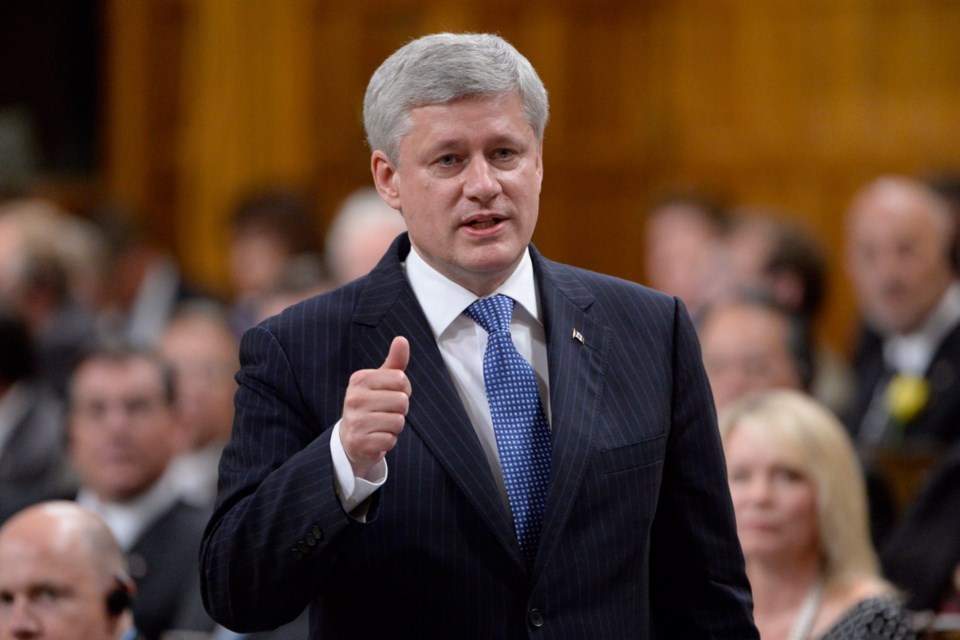 How goofy has the control-freak chokehold on the flow of information become in Ottawa?
How goofy has the control-freak chokehold on the flow of information become in Ottawa?
So goofy that placing a simple meeting notice in a community newspaper became a months-long process requiring the stamp of approval of the prime minister’s office.
Mill Bay’s Jonathan Rayner wrote in with the tale in response to Sunday’s column on Ottawa’s insistence on running even the most apolitical, uncontroversial information through a centralized, political filter before approving its release.
Rayner used to be the communications manager for the federal office responsible for negotiating treaties with B.C. First Nations.
“One of our main responsibilities was to work in partnership with the provincial government and the First Nations to ensure residents of the local communities, which would ultimately be impacted by treaties, were regularly informed about the progress of negotiations,” he writes.
When it came time to hold public meetings, ads would be placed in the local newspaper saying where and when the meetings would be held.
Those notices included the logos of the three negotiating parties — federal, provincial and aboriginal. Pretty straightforward stuff — until the Conservatives took power in 2006.
“Within a couple of months of Stephen Harper’s election, the Federal Treaty Negotiation Office was required to submit all communications bearing the federal logo to the Department of Indian Affairs and Northern Development’s Ottawa communications unit for final vetting,” writes Rayner.
“The staff in that unit had to forward the information to the PM’s office which would in turn approve it and pass it back to DIAND’s communications staff who would then return it to us in the region.
“The directive applied across government, so the PM’s office became so backlogged that it typically took a minimum of a couple of months to get even the most innocuous notice approved.”
And if Ottawa made any changes (which were non-negotiable), the notices had to be re-approved by the province and the First Nations.
“This laborious bureaucratic process created serious problems and a great deal of embarrassment for us in B.C. The three parties could plan meetings and agree on notices, but the federal approval process prevented us from meeting the community newspapers’ publication deadlines.
“We found ourselves in the ridiculous situation of no longer being able to meet Canada’s obligations to inform residents that a meeting was to take place in their community. The upshot was that the province and First Nation ran the ads without the federal logo.
“Of course, federal negotiators would still attend the public meetings alongside their provincial and First Nations counterparts.”
It gets sillier. Because there was no federal logo on the ads, there was pressure not to pay the feds’ share of the bill, even though Ottawa had already agreed to do so under a cost-sharing agreement.
“What had formerly been a simple, efficient system became a nightmare,” Rayner says. “The constraints on the most basic day-to-day communications work were so untenable that I arranged … a position with the provincial government.”
Rayner pulled the plug on his federal employers in 2008, finding a saner home with the province’s treaties office until his retirement in 2011.
His isn’t the most recent or most egregious example of the way information is controlled in Ottawa. (If you want to stay on top of the more Machiavellian stuff, go to Seanholman.com, where the formerly Victoria-based journalist, now an assistant professor at Calgary’s Mount Royal University, writes a column called the Unknowable Country, “mapping the boundaries of secrecy and openness in Canada.”) But Rayner’s story does show how political meddling and paranoia gets in the way of the day-to-day workings of government. With so much decision-making concentrated in the highest reaches of power, the funnel gets jammed pretty quickly. Bureaucracy slows to Soviet Union speed.
This rigid control isn’t about preventing civil servants from divulging state secrets or fighting their political masters on questions of policy.
It isn’t even about stopping bureaucrats from releasing information that might embarrass elected officials (though anyone who thinks that’s a valid reason for secrecy needs to go back to Democracy School).
It’s about a concentration of power that’s held so tightly that it gets in the way of people doing the jobs the taxpayers pay them to do.



